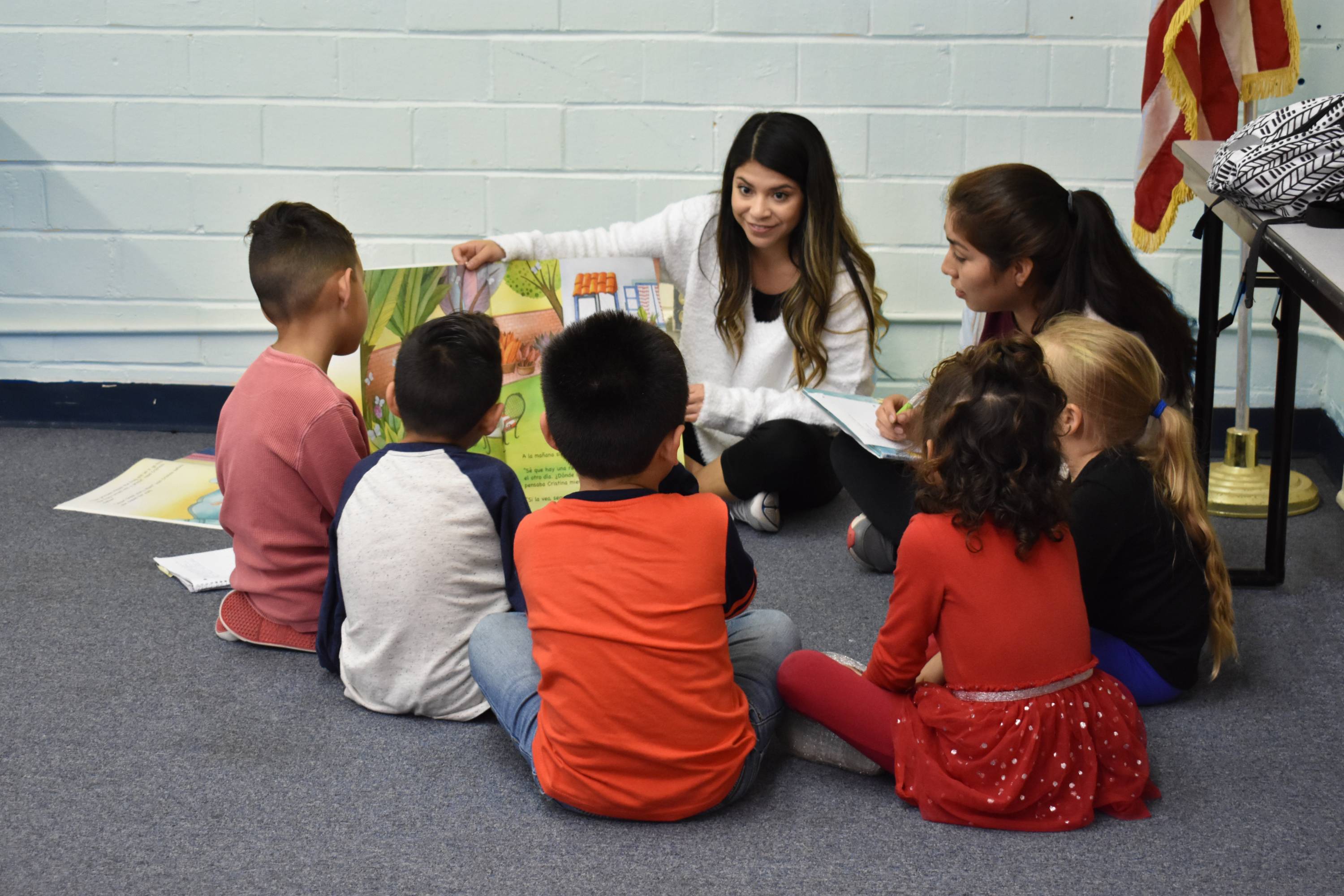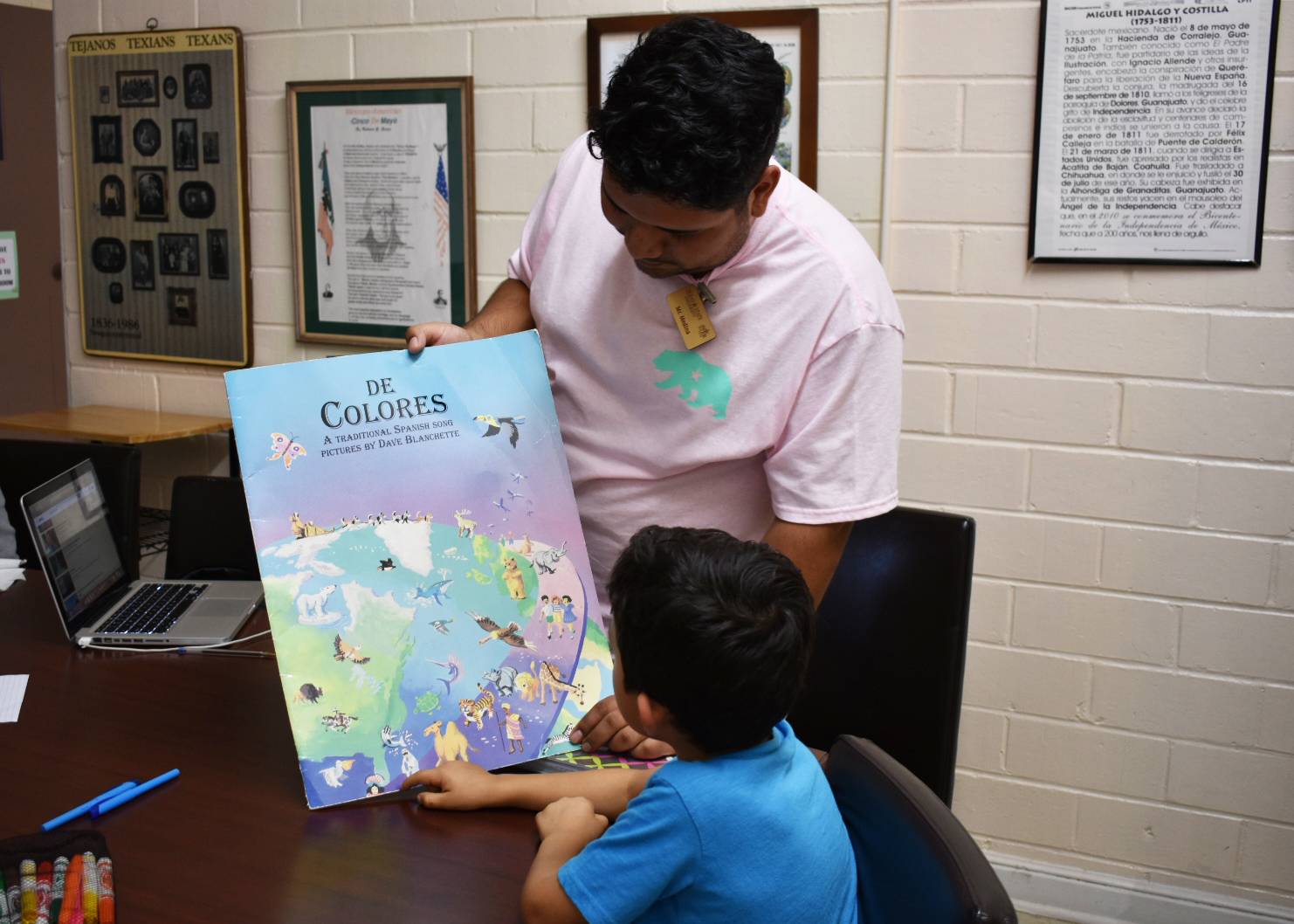Bilingual Education Field Blocks Create Community Partnership
Bilingual Education Field Blocks Create Community Partnership
by Emma Carberry
Outreach Coordinator, College of Education
February 6, 2019
In Dr. Luz Murillo’s second year teaching at Texas State, she has successfully created an influential partnership between three San Marcos institutions. Each Thursday last fall, children from San Marcos CISD’s Dual Language Program were dropped off at the Centro Cultural Hispano de San Marcos to participate in an after-school biliteracy and reading enrichment program with Texas State Bilingual Education students.

The seeds for this unique partnership were planted when Murillo, who is an associate professor in the Curriculum and Instruction Department attended an Amigas del Centro event in 2017, at which she met Centro Program Coordinator Gloria Salazar. The two soon began discussing opportunities for College of Education students to become involved with programming at Centro. Since literacy/biteracy is Murillo’s area of research and teaching expertise, she pitched an after-school reading enrichment program hosted by the students in her upcoming Bilingual Education field block courses, Assessing Literacy EC-6 (RDG 3315) and Literacy Instruction for EC-6 (RDG 3321).
With Salazar’s enthusiastic approval, Murillo reached out to Benjamin Grijalva, San Marcos CISD’s Director of Bilingual Education. Grijalva, who is also a doctoral student in Texas State's School Improvement program, was excited about the possibility of supplementing the district's Dual Language Program students’ in-class experiences with an after-school program involving Texas State. He called a meeting with the parents of the district’s Dual Language students and explained to them the possibilities of the program.
The idea was an immediate hit with parents, and Murillo quickly ended up having a wait list for the after-school program. Due to the enrollment in her own classes, Murillo was only able to accept two SMCISD students for each of her TXST students, allowing for 19 children in kindergarten through second grade to attend the program last fall.


Each Thursday of the fall semester, Murillo’s class met at Centro. From 3:00 to 4:00 p.m. students discussed and debated the theories and concepts in their assigned readings. At 4:00, the SMCISD children arrived and they went off to their assigned rooms to read, write, and engage in other literacy activities with the Texas State students. Following an hour of interaction, the Texas State students regrouped to debrief and make connections between course concepts and what they were observing and learning with the children. Additionally, the students kept notebooks with weekly entries about their interactions with the emergent bilingual children, and these reflections became the basis for the final course project, a case study of a child's literacy development.
It was clear from dropping in on just one session at Centro that the children and university students were truly engaged with the books they were reading and discussing. “Children always need to feel that they are playing, even when they are working,” says Murillo. She adds that bilingual books are a great way to teach literacy in a way that relates easily to children's lives. She demonstrated this with her own students, reading to them My Very Own Room by Amada Irma Pérez, a book about childhood bedrooms, then having them share aloud their own experiences, followed by a writing workshop in which they reflected on their childhood bedrooms. Her students were then able to recreate this model with the SMCISD students. Jacqueline Tellez, a senior Bilingual/Bilcultural Education student from El Paso, TX found the idea of learning through play to be very rewarding. “Instead of watching and working with kids that have formal instruction, it became an opportunity to work with kids in a playful setting which allowed them to explore, create, and most importantly learn without the pressures of an everyday classroom,” she shared.
According to Murillo, the program’s focus was on Spanish-language acquisition and supporting literacy development in Spanish. Since English is the dominant language in these students’ environments, supporting children's continued development of Spanish is important for emergent bilinguals. Murillo says working with dual language students was empowering for her own Texas State students, many of whom had a different understanding of culture and literacy prior to this course. Her students may have learned in traditional education systems that code-switching between English and Spanish is an unacceptable language behavior, but quickly adjusted to the more progressive view that code-switching and translanguaging are legitimate ways that bilingual families use language and that bilingual children develop language.
|
"Instead of watching and working with kids that have formal instruction, it became an opportunity to work with kids in a playful setting which allowed them to explore, create, and most importantly learn without the pressures of an everyday classroom." -Jacqueline Tellez, Senior Bilingual/Bicultural Education student |

While bilingual children are sometimes looked at from a deficit perspective, Murillo says that the experience of working with emergent bilingual children at Centro helps her students to “realize there’s nothing wrong with bilingual children” and “that one size doesn’t fit all." She added that the weekly interaction with children helps future bilingual educators to see firsthand "that we have to be very careful about labeling children as struggling readers, because all children are learning at different paces" and because bilingual children know things about literacy in two languages. Her students leave the course with an understanding of how to teach literacy/biliteracy in a comprehensive way and an awareness that literacy is an aspect of individual and group identity as well as social practice. Rubí Vargas, a senior from Austin, TX, reflected on the course, saying that it made her “realize that children have their own ways of learning and understanding” and that “they contribute to their learning as well.”
After a successful fall semester, all parties seem extremely satisfied and are hoping to grow the collaboration between Texas State, Centro and SMCISD. According to Murillo, SMCISD teachers have told some participating parents that their children have become more confident readers and writers as a result of being in the program. "The partnership we have established with Dr. Luz Murillo is essential to the success of our dual language program," says Grijalva, adding "students who participate seem more confident in speaking Spanish and parents have noticed it." With a new block of Bilingual/Bicultural Education students entering this spring, Murillo’s goal is to continue working with some of the fall children for the full school year, and also to recruit new students to participate and reap the benefits of the after-school literacy program.